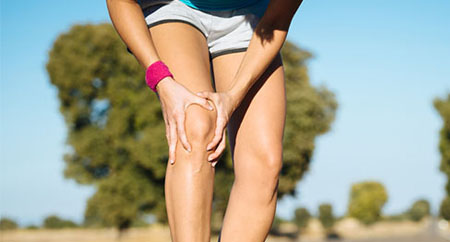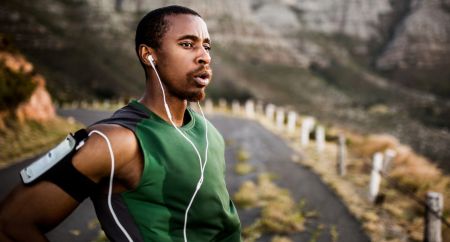NOTE: Our articles are not designed to replace medical advice. If you do not have sufficient level of qualification, knowledge or experience to assess & treat the runner in front of you, make sure you refer them to a suitably qualified health professional.
Today’s Question:
“One of my running clients has what I suspect is ITB syndrome and has had to pull out of the marathon he was training for. He’s only been running for four months, and after his longest run of 12 miles he started getting pain on the outside of his knee, and eventually had to stop. It’s really hilly where he runs so I am wondering if that could have something to do with it?”
Matt’s Answer:
Sorry to hear about your client, I imagine he’s very frustrated. Many runners in this situation will need reminding of what a great achievement it is to get up to 12 miles, especialy after just four months, so bear that in mind if he is feeling very down. Whether he has increased distance too quickly over the four months is something you will also need to consider, as research suggests that inappropriate training levels are a key factor in 70% of running related injury.
Causes of ITB Syndrome
The exact mechanics behind ITB syndrome are still unknown but experience suggests that though the symptom is on the outside of the knee, the source of the issue can be higher up at hip level. I will expand on this in an ‘in depth article’ at some point in the future, but depending on your level of training & knowledge you could well take a look at how your client’s hips are moving when he runs, as although a dropping of the hip does not necessarily cause ITB syndrome, it can aggravate symptoms if they are already there, and therefore delay recovery. We cover this in my Gait Analysis course as it can be a common hinderance to runners reaching full recovery.
Treating ITB Syndrome
If your runner is currently unable to run (e.g. experiences a pain of over 3/10 during the run or within 24 hours after the run), then the primary treatment is normaly rest, anti-inflammatory medication and a little education on what pain is (intro to biopsychosocial model, sensitivity thresholds, etc.). At some point, running will need to become part of your runner’s rehab, even if twinges a little. As always, it will depend a lot on the individual runner in front of you, but some runners do delay recovery because of a fear of movement. Others, of course, have a ‘no pain, no gain’ mentality and will need monitoring to make sure they do not ‘overdo’ it. A program to strengthen the glutes can be useful, especially if you do observe hip drops during their gait, as this strength can play an important part dueing a temporary period of gait retraining, in which the runner reduces that hip drop to avoid provoking of symptoms. Research also shows that runners with a narrow gait (i.e. whose feet cross over an imaginary mid line when they run) can place less stress on the ITB by widening their gait by a just a few centimetres (more info will be given in a future article).
Hills and ITB Syndrome
As far as your question about hills causing the ITB Syndrome, a causal relationship is not yet clear. That said, inappropriate training (too much, too soon, too often) can as often play a significant role in running related injury. Taking extra long strides to repeatedly ‘drag’ an already fatigued body up a hill can lead to over-use of the quadriceps and tensor fasciae latae (TFL). As the TFL is connected to the ITB, its overuse may be a factor in ITB syndrome. For runners who do tend to use long slow strides to get up a hill, I often get them to experiment with cadence training (step rate), as increasing cadence slightly (without increasing the speed) can help redirect the load away from the quads and TFL, and instead to the glutes and hamstrings. Care needs to be taken to maintain the same running speed when increasing cadence, as it’s about increasing steps per minute, not pace.
I hope this answer gives food for thought. Feel free to use our contact form if you have any questions, and sign up for the Runchatlive Newsletter!
![]()
Matt Phillips, Creator of Runchatlive





